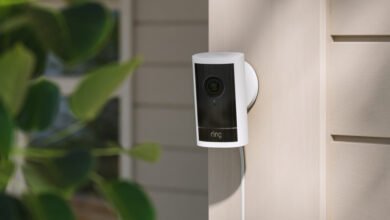AI Video Surveillance: The End of Privacy?

▼ Summary
– AI video surveillance raises privacy concerns by blurring the line between safety and intrusion, with technology tracking behavior in ways that challenge privacy boundaries.
– The global video surveillance market is rapidly growing, valued at $73.75 billion in 2024 and projected to reach $147.66 billion by 2030, with cameras widespread in public and private spaces.
– AI enhances surveillance by enabling real-time facial recognition, cross-camera tracking, and behavior analysis, but these systems can be inaccurate, biased, and lack transparency in data usage.
– Misuse of AI surveillance risks dystopian control, as seen in authoritarian regimes, and has led to wrongful arrests due to errors in facial recognition technology.
– Regulation varies globally, with the EU implementing strict AI laws like banning mass facial recognition, while the U.S. lacks comprehensive federal oversight, emphasizing the need for public awareness and ethical guidelines.
The rise of AI video surveillance presents a profound dilemma between enhanced public safety and the erosion of personal privacy. As these systems become more sophisticated and widespread, the line between security and intrusion grows increasingly blurred, raising urgent questions about how we balance technological advancement with fundamental human rights.
The global video surveillance industry was valued at $73.75 billion in 2024 and is projected to nearly double by 2030. Cameras now monitor streets, retail spaces, and public venues with growing frequency. What sets modern systems apart is their ability to do more than simply record footage. Advanced algorithms can identify individuals, follow their movements across different camera feeds, and detect anomalies as they happen. These systems can also merge visual data with other digital information to create detailed profiles of people’s activities and habits.
Yet this technology is far from perfect. Recognition errors and built-in biases can lead to false identifications and unfair targeting. How information is managed, where it’s stored, who can access it, and how long it’s retained, varies widely depending on regional legislation and whether the operator is public or private. A significant concern is that most individuals have no idea who holds their data or how it might be used.
Without clear regulations and ethical guidelines, societies risk sliding into oppressive environments where constant monitoring becomes the norm. Some authoritarian governments already employ pervasive surveillance to control their populations, and such practices are increasingly influencing global norms. Historical precedent shows that extensive surveillance often accompanies the erosion of civil liberties.
Public demonstrations around the world highlight another dimension of this issue. People gathering to express dissent may hesitate to participate if they fear being identified, tracked, or later targeted. While law enforcement agencies adopt new tools to improve public safety, these systems sometimes fail with serious consequences. Instances have been documented where individuals were wrongfully detained based solely on flawed AI recommendations.
Facial recognition technology used by police often relies on massive databases filled with images taken from social media and public websites. This means virtually anyone with an online presence could potentially be matched to a criminal investigation due to algorithmic error or mere resemblance.
Surveillance is also expanding into educational settings. Schools and universities increasingly install AI-enabled cameras, citing student protection. Skeptics, including privacy advocates, warn that such measures could normalize excessive monitoring and lead to broader social control.
There are legitimate uses for AI surveillance, including criminal apprehension, threat detection, and emergency management. However, these applications must be accompanied by strong oversight and legal boundaries. Governments bear the responsibility of safeguarding privacy, controlling how companies use surveillance data, and preventing the technology from being weaponized against citizens.
The European Union’s AI Act represents the world’s first comprehensive legal framework for artificial intelligence, including strict limits on real-time facial recognition in public areas. Exceptions are narrowly defined, such as locating victims of serious crimes or averting terrorist attacks, and require rigorous judicial approval.
In contrast, the United States lacks a unified federal statute specifically addressing AI surveillance. Regulation is fragmented across state and local jurisdictions, with occasional reliance on existing privacy laws. Although legislative proposals have been introduced, none have yet been enacted into law.
Public awareness is essential. People need to understand their rights and how surveillance technologies might affect them. Education campaigns can demystify data collection practices, empowering individuals to make informed choices and demand accountability from institutions. Widespread public engagement can encourage governments and corporations to adopt more transparent and equitable approaches.
As one industry expert notes, the ethical challenges are significant, especially concerning privacy, bias, and automated decision-making. Organizations implementing AI for security must carefully weigh the benefits of protection against the moral implications of their methods.
(Source: HelpNet Security)





